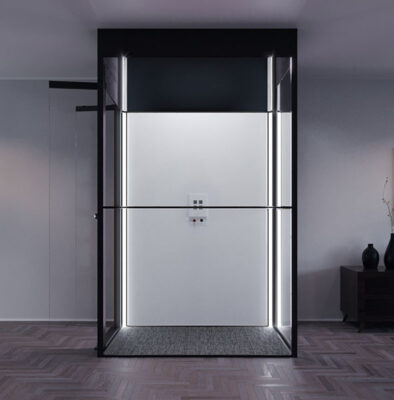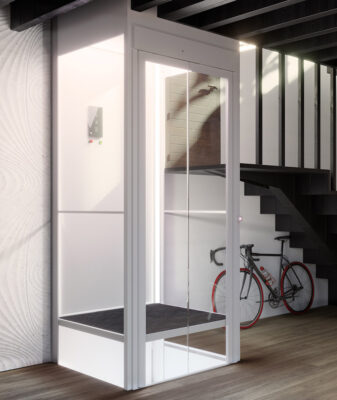What is the Speed of a Domestic Lift?
When people think of elevators, they often imagine the high-rise versions found in skyscrapers. But in private homes, the requirements are entirely different. Let’s explore the differences between a high speed elevator and a domestic lift, and understand the standard elevator speed you can expect with a solution like SWIFT.
1. Standard Elevator Speed in Skyscrapers vs. Homes
- A conventional elevator in a commercial building or skyscraper can run anywhere from 0.5 m/s to 1.5 m/s.
- Some high speed elevators can even reach 18 m/s or more, designed for tall buildings with heavy traffic.
- In contrast, a domestic lift serves just 2–6 floors, where travel distances are short and usage is less frequent. Installing a skyscraper-style elevator in a home would not only waste space but also never reach its full speed in practice.
2. The SWIFT Domestic Lift Solution
- SWIFT is designed specifically for private homes.
- Instead of requiring a large machine room, the platform lift solution has the machinery built-in, reducing space requirements.
- For homeowners, the focus is on safety, comfort, and practicality, not racing between floors.
3. Elevator Speed in SWIFT Models
- SWIFT Pro: Maximum 0.15 m/s in Europe and 0.3 m/s outside Europe. The door speed can even be adjusted via the touch display.
- SWIFT Lite: Same performance levels as SWIFT Pro, with 0.15 m/s in Europe and 0.3 m/s outside Europe.
- This makes SWIFT’s speed ideal for homes, ensuring smooth travel without unnecessary complexity.

Factors That Influence Elevator Speed
The speed of a domestic lift is shaped by both engineering and design choices. Key factors include:
- Type of Drive System
- SWIFT uses Screw & Nut EcoDrive with Dynamic Charge, which prioritizes reliability, energy efficiency, and comfort over extreme speed.
- By contrast, traction lifts with gearless motors are faster but are typically used in commercial buildings.
- Motor Power and Control System
- Advanced systems such as Thor Engineering™ ensure smooth control.
- Features like controlled acceleration and deceleration make every ride safe and comfortable, even at moderate speeds.
- Building Height
- Homes typically have 2–6 floors, making ultra-fast travel unnecessary.
- High speed elevators are essential in skyscrapers but impractical in residential houses.
- Safety Regulations
- EN81-41 compliance ensures that SWIFT speeds meet strict European safety standards.
- Even if an elevator could go faster, regulations limit speeds to prioritize passenger protection.
Why Speed Isn’t Everything in a Domestic Lift
- In private homes, comfort and design matter more than speed.
- Smooth acceleration, quiet operation, and energy-efficient systems define the experience.
- A standard elevator speed for residential use is between 0.15–0.3 m/s, striking the perfect balance between efficiency and safety.
How to Calculate Elevator Speed
If you want to measure your lift’s performance:
- Measure the distance between two floors.
- Time how long it takes for the lift to travel that distance.
- Use the formula: Speed = Distance ÷ Time.
This simple calculation shows whether your lift is performing within the expected standard elevator speed range.
Final Takeaway
For a domestic lift, speed is not about being the fastest—it’s about being the most suitable. SWIFT Pro and SWIFT Lite deliver the right balance of safety, comfort, and functionality, with a maximum speed of 0.15 m/s in Europe and 0.3 m/s outside Europe. That makes them the perfect fit for modern homes, offering a safe and efficient way to move between floors.
Learn more about SWIFT Pro speed and features today.











